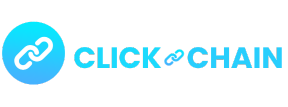Software development organizations on their agile journey often grapple with a common challenge: how to craft better user stories. In response, well-intentioned coaches and consultants frequently offer guidance, often emphasizing specific user story formats like Connextra (or role-feature-reason) and advocating for standardized acceptance criteria written in Gherkin syntax. While these recommendations have their merits, they sometimes miss the mark when it comes to addressing the real issues with user stories. In such cases, teams become overly fixated on the mechanics of story creation, leading to overly complex templates in tools like Jira.
However, the core problem lies deeper. The quest for better user stories is typically driven by a few key concerns:
- Efficient Requirement Communication: How can we efficiently convey all requirements to developers, allowing them more time to code?
- Comprehensive Requirement Coverage: How can we ensure that nothing is overlooked, reducing the risk of developers discovering missed requirements during development?
- Right-First-Time Development: How can we write stories so that developers get it right the first time?
These responses shed light on a fundamental issue – organizations in this predicament are essentially suffering from the very problem user stories were meant to solve. They replace collaborative conversations with a requirements document. Agile practices emphasize self-organizing teams and the importance of collaboration and shared understanding, instead of a strict division of labor or treating developers as mere order-takers.
The software development industry has, historically, borrowed practices from factory processes, which has often proven to be counterproductive. These practices include Taylorism, an early 20th-century manufacturing process focused on optimizing production lines with strict managerial control, and Theory X management, a management style that assumes workers lack ambition, avoid responsibility, and cannot be trusted to do a good job. These practices, remnants of applying factory methodologies to software development, still persist in many software organizations, even those claiming to be agile. Developers in such environments are often viewed as mere task executors, converting requirement documents into working software, all in the name of efficiency and “getting it right the first time.” However, this approach stifles the opportunity for iterative and incremental development, which is fundamental to agile software development.
Agile frameworks, unintentionally or otherwise, have contributed to the misconception that user stories are essentially a new format for delivering user requirements to development teams. The reality often contradicts official guidelines. Scrum, for instance, typically designates a Product Owner as the sole point of contact with the business, users, or customers. Product Owners often work in isolation, disconnected from the end-users, documenting requirements that originate from within the organization.
In software organizations, development and engineering teams are often separated, relying on a Project Management Office (PMO) for coordination. Consultants have sometimes reinforced this divide by asserting that developers shouldn’t interact with users – that it’s the job of the Product Organization. The focus should be on writing code, and developers shouldn’t be involved in decision-making since they might make promises that can’t be fulfilled.
User stories were named “stories” (not requirements) because they were never meant to be a new form of requirements documentation. Kent Beck introduced user stories in Extreme Programming (XP) to escape the clutches of prescriptive requirement documents. A “story” symbolizes a conversation between those facing a problem (the business, customers, users, etc.) and those capable of solving it (the development team). No standard user story template can truly help a team if the software organization’s structure discourages developers from engaging in conversations with the people for whom they are building the software.
To truly unlock the potential of user stories, refocus on collaborative conversations and interactions with customers. Understand that user stories are not just requirements; they are an integral part of an ongoing dialogue bridging the gap between problem solvers and problem facers. User stories are a promise for a conversation, not a substitute for one. As Alistair Cockburn, Agile Manifesto co-author, aptly puts it, “It was at that moment that I learned the word ‘requirements’ actually means ‘shut up.’ For many, that’s exactly what requirements do – they halt conversations about people and the problems we’re solving.”
To make the most of agile development, ensure your development teams engage directly with software customers and users, enabling meaningful dialogues. Rather than obsess over the mechanics of writing better stories, focus on collaborative conversations and shared understanding. Prioritize interaction and meaningful communication over rigid documentation to truly embrace the essence of agile.

